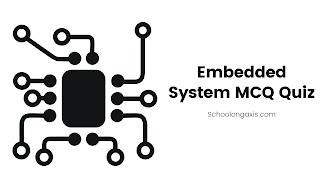1. Which signal is sampled at regular intervals for the purpose of ADC?.
A. analog signal.
B. digital signal.
C. quantized signal.
D. sampled signal.
Answer= analog signal
2. Which factor depends on the quantisation error?.
A. number of error.
B. number of bits.
C. size of error.
D. conversion process.
Answer= number of bits
3. Which is the first type of error caused during the conversion process?.
A. sampling error.
B. interrupt signal.
C. counter error.
D. quantisation error.
Answer= quantisation error
4. Which of the following defines the number of samples that are taken in the time period?.
A. sample size.
B. sample nature.
C. sample rate.
D. sample frency.
Answer= sample rate
5. Which of the following can determine the speed of conversion device itself?.
A. sample rate.
B. sampled data.
C. sample size.
D. sample nature.
Answer= sample rate
6. Which of the following can determine the maximum frency that can be converted?.
A. sample frency.
B. sample rate.
C. sample size.
D. sample nature.
Answer= sample rate
7. Which term determines the random timing error?.
A. jitter.
B. quantisation error.
C. sample error.
D. delay.
Answer= jitter
8. Which of the following introduce a phase error?.
A. conversion time.
B. sampling rate.
C. sample size.
D. sample nature.
Answer= conversion time
9. Which of the following can generate an interrupt?.
A. timer.
B. trigger.
C. delay.
D. counter.
Answer= timer
10. Which filter is used for filtering out the high frency components?.
A. bandpass filter.
B. band reject filter.
C. analogue filter.
D. digital filter.
Answer= analogue filter
11. Which theorem describes the sampling rate with the frency of the analogue signal?.
A. Nyquist theorem.
B. Bayes theorem.
C. Sampling theorem.
D. Parseval's theorem.
Answer= Nyquist theorem
12. From which of the following words does codecs is derived?.
A. coder.
B. decoder.
C. coder-decoder.
D. coder-encoder.
Answer= coder-decoder
13. Which codec is used in digital audio?.
A. A-law.
B. ??-law.
C. linear.
D. PCM.
Answer= linear
14. Which of the following have the same quantisation step throughout the range?.
A. linear.
B. PCM.
C. DPCM.
D. ADPCM.
Answer= linear
15. Which is used in the telecommunication applications which has a limited bandwidth of 300 to 3100 HZ?.
A. linear codec.
B. logarithmic codec.
C. PCM.
D. DPCM.
Answer= logarithmic codec
16. Which codec is used in the UK?.
A. a-law.
B. ??-law.
C. linear codec.
D. PCM.
Answer= a-law
17. What does PCM stand for?.
A. pulse codec machine.
B. pulse code modulation.
C. peripheral code machine.
D. peculiar code modulation.
Answer= pulse code modulation
18. Which of the following conversion is performed by using a lookup table?.
A. DPCM.
B. ADPCM.
C. Between DPCM and ADPCM.
D. Linear cdec and a-law.
Answer= Linear cdec and a-law
19. What does DPCM stand for?.
A. differential pulse code modulation.
B. data pulse code modulation.
C. dynamic pulse code machine.
D. dynamic pulse code modulation.
Answer= differential pulse code modulation
20. Which of the following have a 16-bit digital dynamic range?.
A. PCM.
B. DPCM.
C. linear codec.
D. logarithmic codec.
Answer= DPCM
21. How many types of logarithmic codecs are used commonly?.
A. 2.
B. 3.
C. 4.
D. 5.
Answer= 2
22. What does ADPCM stand for?.
A. address differential pulse code modulation.
B. adaptive differential pulse code modulation.
C. address dynamic pulse code machine.
D. adaptive dynamic pulse code modulation.
Answer= adaptive differential pulse code modulation
23. Which of the following uses a non-linear quantisation value?.
A. PCM.
B. DPCM.
C. ADPCM.
D. linear codec.
Answer= ADPCM
24. Which of the following works by increasing the dynamic range?.
A. logarithmic codec.
B. linear codec.
C. DPCM.
D. PCM.
Answer= DPCM
25. Which device can make the PWM operation easier?.
A. timer.
B. software.
C. hardware.
D. transistor.
Answer= timer
26. Which of the following can be used for providing high gain?.
A. transistor.
B. darlington transistor pair.
C. resistor.
D. capacitor.
Answer= darlington transistor pair
27. Which devices have high drive capability?.
A. transistor.
B. fet.
C. buffer pack.
D. darlington amplifier.
Answer= buffer pack
28. Which of the following is used to switch heavy loads?.
A. fet.
B. transistor.
C. buffer pack.
D. darlington pair.
Answer= fet
29. Which allows the switching of DC motor by using two outputs and four FETs?.
A. transistor.
B. H bridge.
C. darlington pair.
D. buffer pack.
Answer= H bridge
30. Which of the following is used to create H bridge?.
A. switches.
B. led.
C. capacitor.
D. inductor.
Answer= switches
31. Which of the following allows voltage reversing?.
A. H bridge.
B. Relays.
C. LEDs.
D. LCDs.
Answer= H bridge
32. Which devices are used as indicators in a digital system?.
A. LCD.
B. LED.
C. Varactor diode.
D. Gunn diode.
Answer= LED
33. How is the biasing done in LEDs?.
A. forward bias.
B. no bias.
C. supply voltage.
D. reverse bias.
Answer= reverse bias
34. Which of the following determines the brightness of LEDs?.
A. current.
B. voltage.
C. resistance.
D. conductance.
Answer= current
35. Which of the following is a current limiting device?.
A. voltage.
B. current.
C. buffer.
D. inductor.
Answer= buffer
36. Which of the following can switch the current by a make or break contact?.
A. transistor.
B. relay.
C. buffer.
D. fet.
Answer= relay
37. Which of the following generates a back EMF?.
A. relay.
B. buffer.
C. transistor.
D. FET.
Answer= relay
38. Which of the following is used to avoid the back EMF in the relay?.
A. resistor.
B. capacitor.
C. inductor.
D. diode.
Answer= diode
39. Which of the following can provide a speed control techni in the DC motor interfacing?.
A. PCM.
B. DPCM.
C. ADPCM.
D. PWM.
Answer= PWM
40. Which of the following possesses some loops for providing timing functions?.
A. hardware.
B. software.
C. timer.
D. counter.
Answer= software

